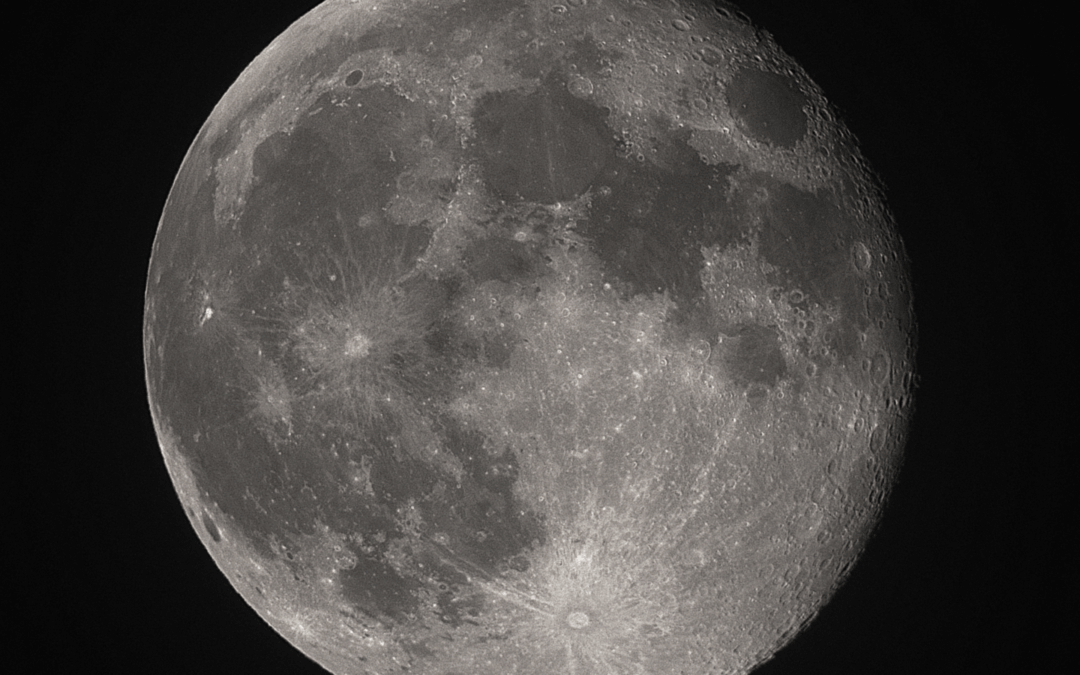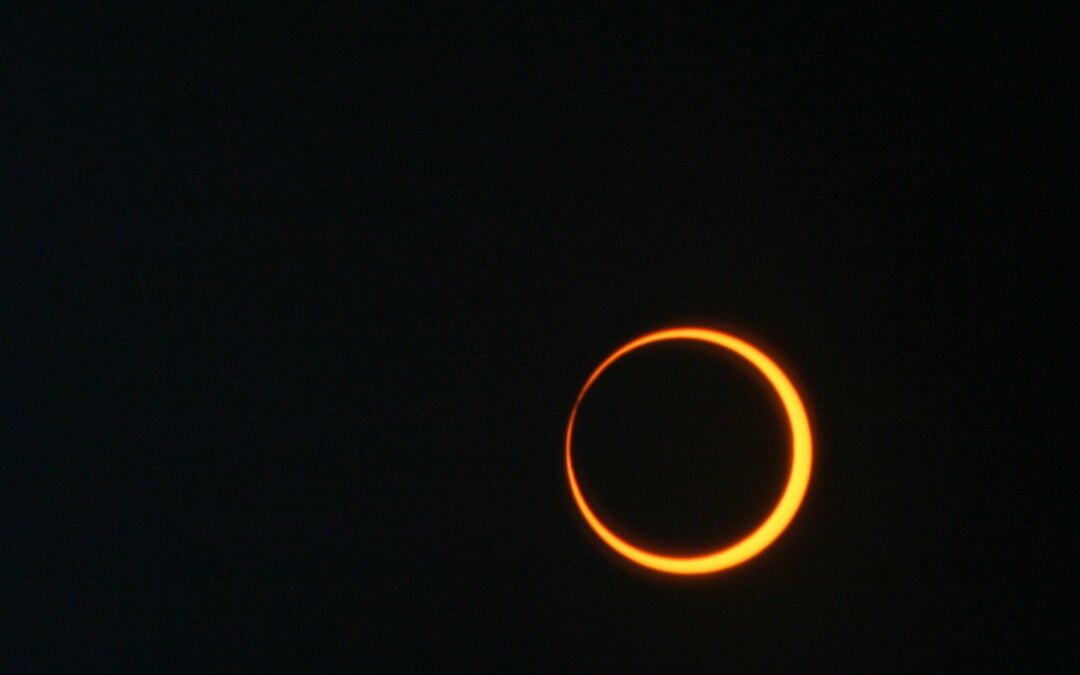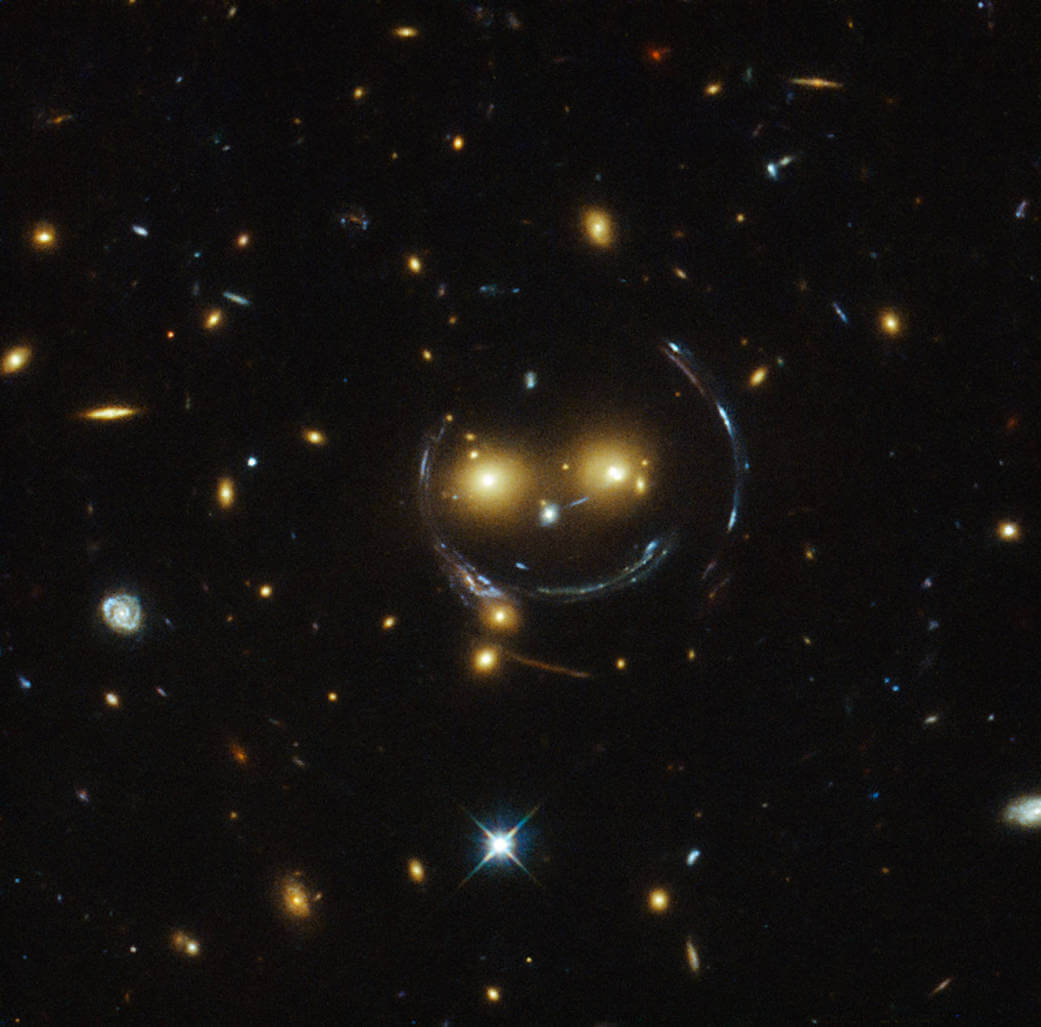Asteroid Month takes place each June, ending with Asteroid Day on June 30. Just in time this year, a near-Earth asteroid (NEA) will be zooming past Earth in the approaching weeks, giving skygazers everywhere a chance to catch one in action!
There are millions of asteroids orbiting the Sun, chunks of rock and metal leftover from when our Solar System formed. Some of these orbit near Earth, making them NEAs; some come particularly close, making them potentially hazardous asteroids (PHAs). When NEAs are larger than 140 meters (640 feet) across and come within 0.05 Earth-Sun distances, or about 7.5 million km (4.6 million mi), they’re put into the potentially hazardous category. The asteroid soon to be flying by is a PHA, meaning it’s extra-important for scientists to understand its trajectory.
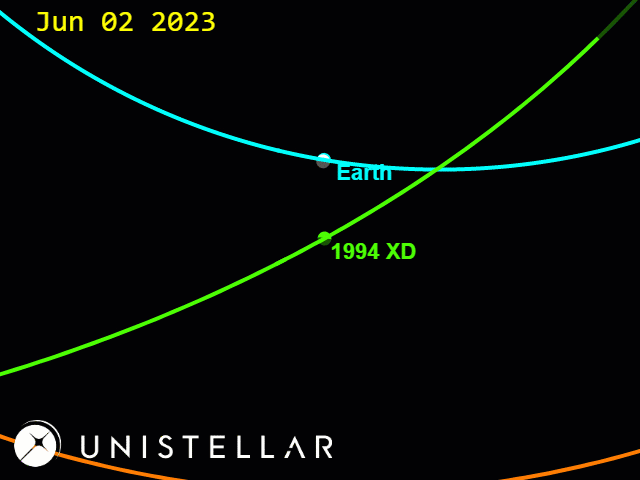
The orbit of potentially hazardous asteroid (488453) 1994XD. You can see how it will cross Earth’s orbit! Credit: Tony Dunn.
Find an Asteroid Near Earth
The approaching space rock is a PHA called (488453) 1994XD. It’s about 500 m (1640 ft) across, which is big, but not world-ending big. Still, an asteroid of that size could do some serious damage. For comparison, the Chelyabinsk meteor was an asteroid just 18 m (60 ft) when it exploded over Chelyabinsk, Russia in 2013 with the force of around up to 500 kilotons of TNT, or around 30 atomic bombs. Fortunately, 1994XD won’t hit us — it will pass about eight lunar distances from Earth on June 12 — but it’s still necessary to get better data about its orbit to see where it will be in the future.
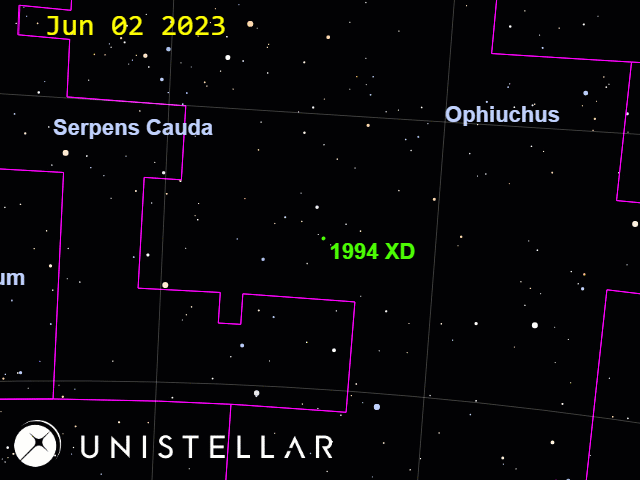
Asteroid (488453) 1994XD as it will fly through the sky this June. Credit: Tony Dunn.
To protect the citizens of Earth from a potentially destructive impact, scientists around the world are engaged in Planetary Defense, which entails watching out for and potentially deflecting an incoming asteroid. That could look something like NASA’s Double Asteroid Redirect (DART) mission, which crashed a spacecraft into an asteroid to nudge its orbit (it worked — and was observed by Unistellar members!), or keeping tabs on PHAs.
As 1994XD approaches Earth in June, we’re calling on members of the Unistellar Network to make observations and submit their data to scientists so they can refine their estimates of its orbit. The asteroid will be visible worldwide beginning June 2 and it will be moving fast – so fast that by June 11, even before it makes its close approach on June 12, it will likely be flying too fast to observe! Catch this asteroid while you can, and learn more about this mission on our Planetary Defense Missions page!
How to observe this asteroid with your Unistellar telescope:
1994XD is registered in the Unistellar App Catalog, so it’s easy to observe. You’ll be using the Unistellar app’s Planetary Defense mode, which can be found under the Science tab.
First, read the Planetary Defense Tutorial and follow the instructions under Observation Step 1A: The asteroid is in the App catalog.
In the Recording field enter the following information: Exposure time: 3970 ms / Gain: 30 dB / Duration: 10min. Please make at least three 10-minute observations if you can (but more are always welcome!) When you are done, don’t forget to fill out a Report Form.
If you have any questions, feel free to contact us at [email protected]
Further readings
Unistellar Community Included In Multiple Scientific Papers
Did you know Unistellar Citizen Astronomers are often cited in published scientific papers? Find out how you can contribute too!
What Are the Names of All the Full Moons in 2024?
Discover the enchanting names of the full moons in 2024. Delve into the unique character of each lunar spectacle and embrace the allure of the night sky.
New Unistellar App Update: Version 3.0
The latest Unistellar App Update, version V3.0, is now live. Explore a smooth stargazing experience !
What to Observe This November: Open Star Clusters and More
These Halloween deep-sky objects will add some light to those dark, spooky nights. Treats, tricks, and telescopes await!
When Is the Next Solar Eclipse, and How to Observe It With a Unistellar Telescope
An annular solar eclipse is visible from the Americas on October 14. Learn how to witness the Ring of Fire with your Unistellar Telescope!
Halloween Observing Guide: Spooky Deep-Sky Objects
These Halloween deep-sky objects will add some light to those dark, spooky nights. Treats, tricks, and telescopes await!

